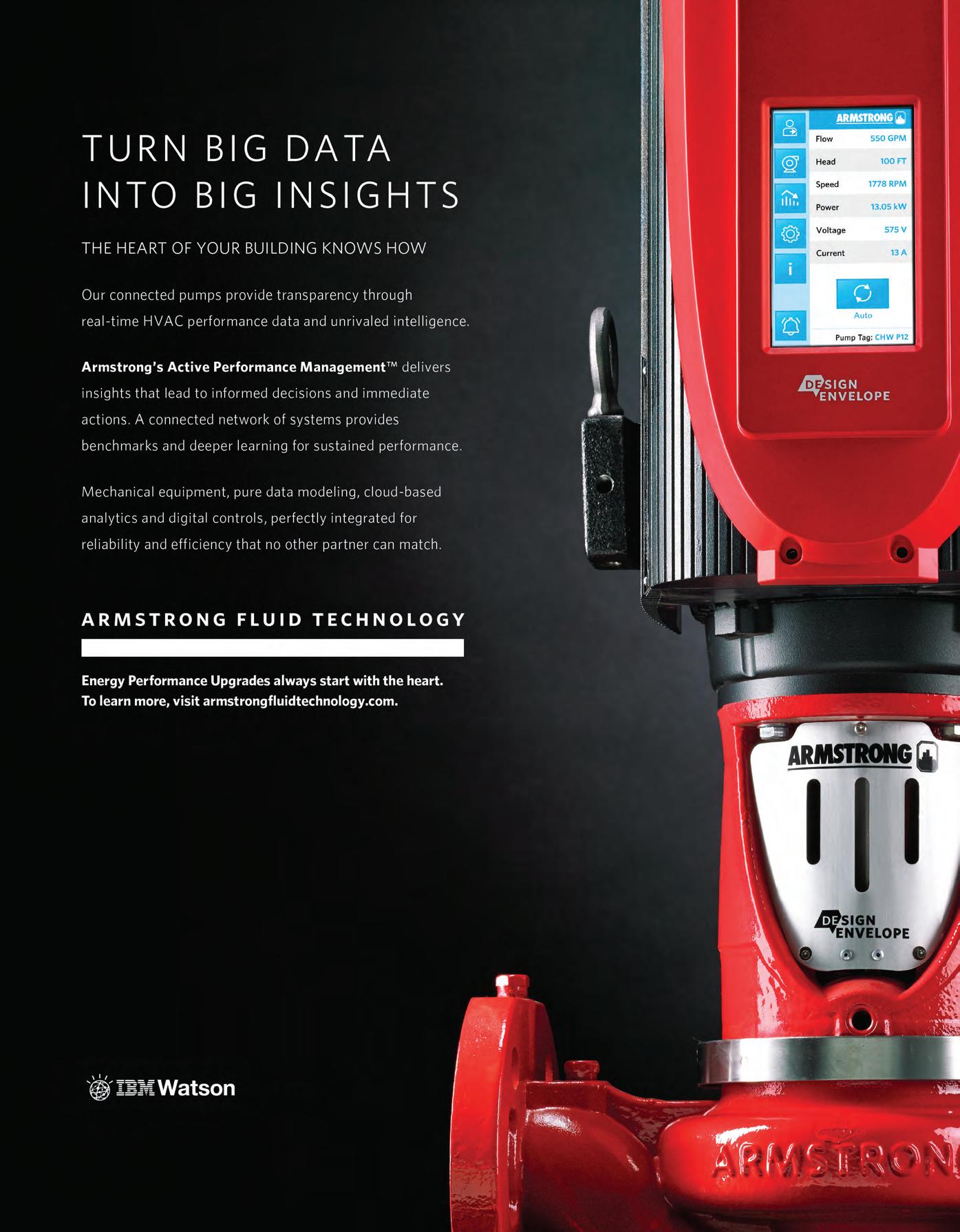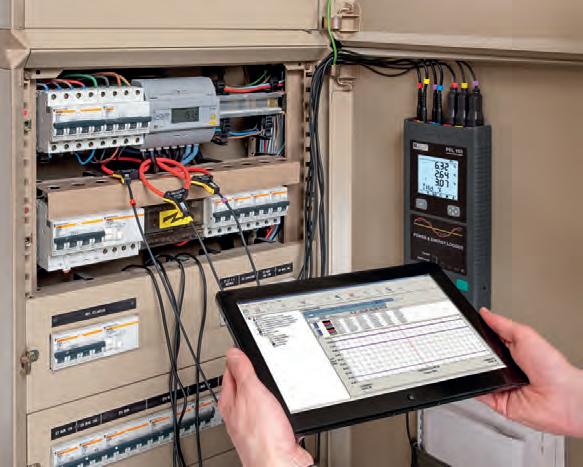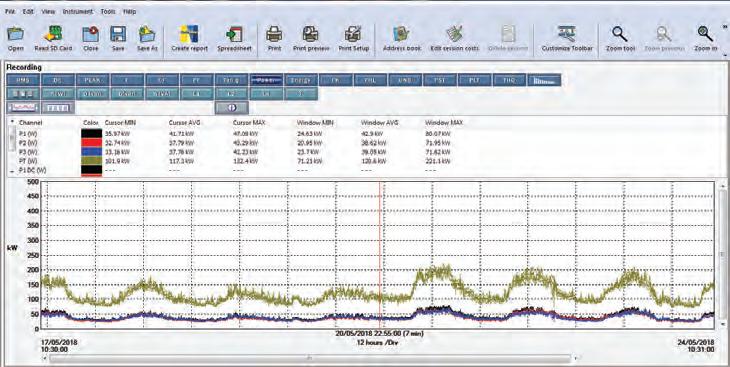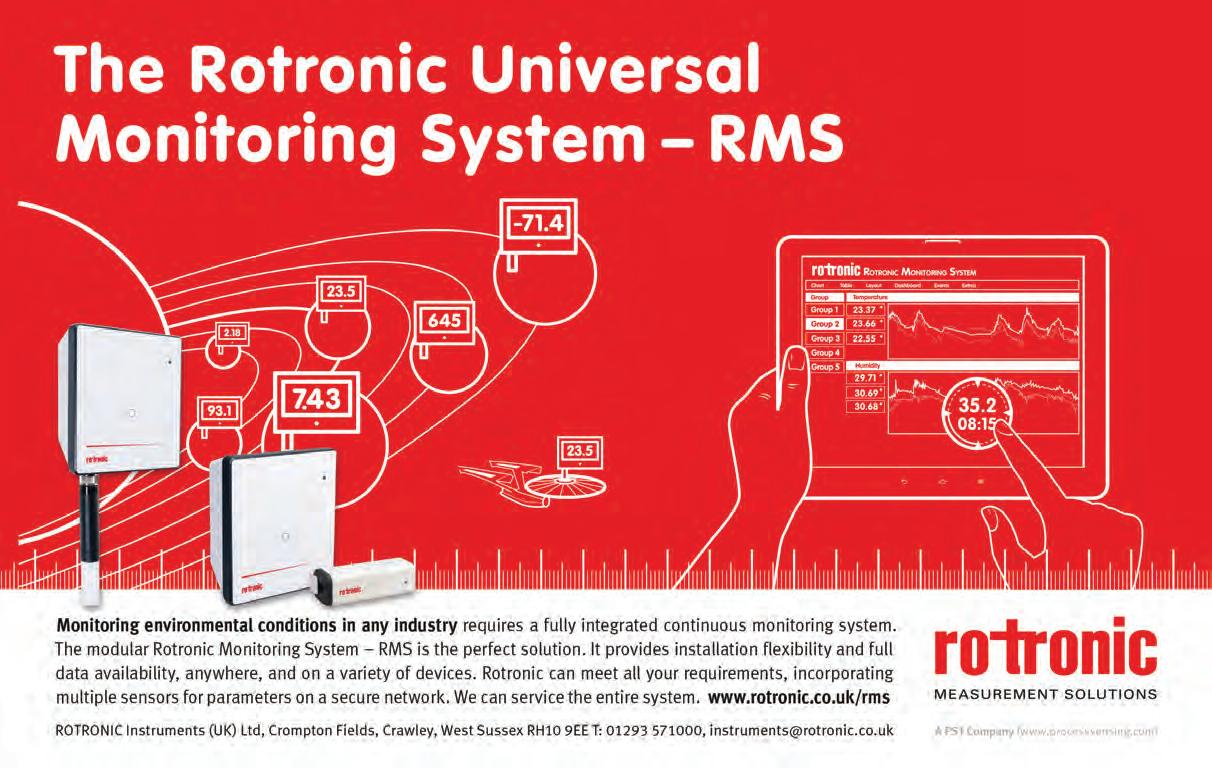
16 minute read
The Warren Report
Andrew Warren is chairman of the British Energy Efficiency Federation
07/08.20
Advertisement
Government must not bottle it again
Twice Government had the chance to ensure existing buildings are more thermally efficient. It now has a third chance which, in a climate emergency, it must grasp T hroughout this century, each government initiative has been accompanied by an economic impact assessment. The objective is simple. It energy efficiency of their homes. It is also a question of b) establishing when making such improvements should be mandatory. The often neglected (c) is making people aware of what you are doing, and why you demonstrates that what is being proposed are doing it. is good value for money. Essentially these options can be
This exercise is undertaken before described as offering carrots, sticks and formal decisions are taken by the Cabinet tambourines. They operate best when to proceed with a public consultation working in parallel. And by coinciding on the policy. Ideally, that consultation with the time when building work is most should provide useful suggestions on how likely to be done to homes. to tweak the policy to improve it. And The first of these times is when while not plebiscites, it is always worth people move into a home. The other, by establishing whether there is a broad definition, is whenever existing occupiers consensus behind the proposals from decide to improve that home. participants.
Overall, this practice offers a key Current building regulations definition of how participatory All additions - extending upwards, democracy should work. And so it does. downwards or sideways - Mostly. But this autumn the Government are automatically required to meet the is set to consult on a topic that it has energy standards of the current building sought to establish public support for on regulations: these are also set to be three previous occasions. It has garnered upgraded, to net zero carbon. that support. But then bottled the But as of now, even though a building’s subsequent decision. carbon footprint is being expanded, there
The UK is committed to become a remains absolutely no requirement to do net-zero-emissions society within 30 anything simultaneously to ensure that years. Approaching 40 per cent of carbon the original home is anything like up to emissions come from the buildings we contemporary energy standards. live and work in. The majority of homes This is not through want of trying. likely to be occupied in 2050 have already When the energy parts of the building been built. regs were improved in 2006, in 2010 and
So the Ministry for Housing, again in 2013, there were proposals put Communities and Local Government is forward to include such “consequential set to issue a public consultation into how improvements” within the package. On best to ensure such existing buildings are each occasion, these were agreed by the made more thermally efficient. then Cabinet.
The three policy options available In both the earliest and latest exercise, have long been established. It becomes a the concept was actually included in the matter of providing a) financial incentives public consultation; positive reactions to persuade householders to improve the were received from 80 per cent, and then
84 per cent of respondents.
On the middle occasion, just one day before the consultation started, the new Minister (John Healey) decided to exclude any references to consequential improvements. Doing so required bowdlerising the obligatory economic impact assessment, cutting out any references to the viability of consequential improvements. Healey maintained subsequently that “the benefits didn’t justify the costs.”
A year later, after Healey had left office, the Freedom of Information Commissioner eventually extracted the truth. It was that “consequential improvements” would have given the greatest proportional benefits to each household, with subsequent energy savings 2.3 times greater than any initial capital costs.
The most recent public consultation, held in 2012 under Eric Pickles, did include the “consequential improvements” concept, together with its impact assessment. This identified well over £11bn in benefits to the overall economy from “consequential improvements”. Plus the accrual of over 130m tonnes of lifetime carbon dioxide savings. And, with the government’s then flagship policy set to be launched that autumn, some 2.2m more Green Deal contracts.
Sadly, well after the consultation had concluded, consequential improvements fell foul of the Daily Mail. Dubbing it a “conservatory tax” (although it wasn’t a tax, and didn’t include the vast majority of conservatories), this high profile venal campaign persuaded Pickles to reverse his previous position, and reject the entire concept. Thus ensuring all the benefits, ecological and financial, that he had earlier championed, still continue to be lost.
In a sane world, we would be sending the bill for the benefits forgone to these former ministers - whose determination to place personal prejudice before practical evidence is even now leading to more emissions and higher fuel bills.
Instead we must trust that, in 2020, the realities of the climate emergency and the upcoming recession will ensure that this time round, sanity will at last prevail. Expanding an existing building will require consequential improvements to the original.
Monitoring & Metering
For further information on Energy Assets visitwww.eibi.co.uk/enquiriesand enter ENQUIRY No. 125
David Sing is group managing director (assets), Energy Assets
The measure of sustainability


David Sing examines how connecting metering, monitoring, analytics and artificial intelligence will become the standard approach to building energy efficiency T he Chancellor has taken the first tentative steps towards a green industrial revolution to reskill the economy for a net zero As a result, it’s possible to interface consumption data, down to individual meter points, with KPIs to monitor, for example, energy usage per square meter, with results future – and among the key areas automatically emailed to managers of focus will be green buildings, to communicate ranking and any including those in industrial and performance issues. commercial settings. Now though, digitalisation is
Energy managers will be at the ushering in a new era of artificial forefront of using advanced energy intelligence capable of modelling this metering, monitoring and intuitive data to redraw what optimal energy data analytics in this transition efficiency looks like. to a low-carbon economy in line For example, our AI data analytics with the government’s net zero platform – AMR DNA - is enabling commitment. For industrial and complex, multisite organisations, commercial businesses - and public such as retailers, local authorities and sector organisations – this will universities to analyse years of half mean adopting emerging digital Skills for tomorrow: energy managers will be at the forefront of using advanced energy metering hourly consumption data and identify tools – notably artificial intelligence monitoring portals such as analytics and artificial intelligence as patterns of energy waste that it would – to take control of energy and WebAnalyser and the application a holistic data trail will become the take an army of analysts years to find. optimise the associated financial and of artificial intelligence (AI) tools standard approach to building energy In one project, the Central England environmental benefit. such as AMR DNA, both of which are efficiency in the green industrial Co-operative generated a 206 per
To date, one of the biggest within the Energy Assets portfolio, revolution. Automated meter cent return on investment by challenges facing energy managers managers can cut through this reading already delivers the data in identifying and eradicating energy has been making sense of the sheer information overload to bring clarity half hourly bites and sophisticated waste and implementing evidencevolume of half-hourly consumption where there was fog and automated online dashboard monitoring and based efficiency strategies. data delivered automatically by action where there was human analytics delivers customised reports The core value of this AI system advanced meters. interpretation. on energy performance linked to is its ability to assimilate meter
Now though, through energy Connecting metering, monitoring, parameters and event exceptions. data into a performance model and measure this profile against key criteria to identify waste, which
London borough chooses AI to cut energy could result from something as simple as leaving lighting on
The London Borough of Merton Merton Council. “We understood the emergency and they, like local overnight or, more critically, failing identified energy waste valued value inherent in the data but analysing authorities all around the country, will to adapt heating schedules to a at £25,000 within 15 minutes of the entire portfolio in near real-time likely face challenges around reducing change to British Summer Time. employing a new artificial intelligence would have needed an army of waste energy. AI is set to play a key Over time, the AI platform ‘learns’ tool. analysts. Now we can accomplish this role in developing the data-driven what best performance looks like for
Using consumption data for counciland more through AMR DNA.” actions needed to optimise energy each building and produces a ‘to-do’ run schools, algorithms applied by The building management industry consumption in buildings and to help list to optimise efficiency.
AMR DNA, an Energy Assets service, faces the huge challenge of making councils move towards carbon neutral It is by combining automated quickly flagged unnecessary energy best use of existing resources, operations.” meter reading with advanced use outside normal operating hours. including data. The approach Merton AMR DNA, which is powered by monitoring and AI that energy
Now, the council is applying the has taken shows it is possible to kWIQly architecture, uses AI-driven managers can spot the trends and technology across its real estate embrace these challenges to help meet processes to interrogate energy data, automate actions that will inform the portfolio, not only to prevent energy waste, but also to leverage continuous data analytics to ensure each building management system ‘learns’ what best energy performance looks like. climate change commitments. George Catto, AMR DNA client services director, commented: “Over half of all London boroughs have now declared a climate change find patterns of energy waste often hiding in plain sight and then provide tailored recommendations. Thereafter, AI tracks the impact of changes, provides an audit trail of projects, best ways to save energy. The only way to accurately understand energy consumption and building efficiency is to look at data historically and
“We have been collecting monitors day-to-day consumption and apply it to models for the future. consumption data for many years automatically flags corrective actions More than ever as we move through automated meter reading, and that need to be taken. And because into a lower carbon era, metering, it has been very useful in identifying analysis is continuous, the best monitoring and analytics, coupled the root cause of specific energyconsumption profile for each building with AI, will be the measure of related problems,” said Richard Neil of is progressively ‘learned’. sustainability – and energy managers have a vital role to play.

Monitoring & Metering
For further information on eSight Energy visitwww.eibi.co.uk/enquiriesand enter ENQUIRY No. 126
Janie Jefferies-Freer is CEO, eSight Energy
Real-time energy data allows companies to measure their immediate impact

Let’s keep it real
Real-time energy data is a key metric for an energy management program to be successful. With live data being collected, the question becomes how to organise and review it, says Janie Jefferies-Freer
Being able to monitor demand or power factor, as well as do not provide energy managers energy data in real time utilise rebates to improve return on the appropriate statistics and provides an understanding investment (ROI) on energy products conclusions they need to make dataof energy consumption and energy procurement. driven decisions. and performance across Furthermore, by using real-time However, by utilising real-time separate operations units. This is energy data and monitoring, energy energy data and monitoring especially critical for organisations managers can identify and manage software, energy managers can that are balancing a variety of energy spikes throughout the day. proactively measure spikes in business operations. By reviewing energy trends and consumption, reduce base loads,
For example, an organisation spikes over the course of the day, evaluate peak hours, identify might only capture energy usage data they can determine best practice irregularities, optimise operational on a weekly or monthly basis. While methods to reduce equipment scheduling and track energy-saving this gives them a good idea of overall energy consumption, as well as targets and goals more accurately. consumption across the business, determine the most efficient Having real-time energy data it provides no daily breakdown of scheduling to reduce energy improves awareness of energy usage energy usage (making it hard to consumption when spikes occur. and consumption across an entire identify trends and spikes) or daily organisation. It will also improve energy usage per business unit Reactive energy management employee engagement in corporate (making it difficult to isolate energy In most cases, energy managers sustainability goals, encourages eaters). Real-time energy data and reactively manage their utilities employees to reduce energy monitoring solves this by providing whenever they receive their consumption and energy costs, and up-to-date information across the utility bill. Utility bills give some helps communicate large amounts enterprise on a regular basis. basic information on usage and of data to a variety of audiences.
Monitoring real-time energy data cost, but they cannot directly Particularly where the also provides energy managers tell you what you’re paying for communication of data is with better insights into cost per and why last month’s bill might concerned, real-time energy data unit of energy. This metric helps be drastically different than this and monitoring will show energy organisations to reduce costs in month. Subsequently, utility bills consumption across all business units (including daily breakdowns), as well as how much it has cost the enterprise. But the real value in having this kind of analytics in place is that it helps businesses to make informed decisions.
For example, C-level executives and directors will want to understand top-level metrics – costs, overall energy consumption and how energy reductions have contributed to monies saved. Energy managers, on the other hand, will be principally concerned with energy consumption per business unit (on a daily, weekly and monthly basis) as well as energy trends, spikes, and other more granular information. Having a solution in place to show this kind of information will help organisations to rapidly reduce energy consumption, save costs and improve energy efficiency overall.
Real-time energy data and monitoring software also allows employees to measure the impact their individual sector has on the overall energy consumption across the company. Having the ability to report on sector specific energy usage can serve as a wake-up call to employees that their day-to-day activities directly affect the business’ bottom line. The more informed an employee becomes in terms of energy awareness, the more inclined they will be to do their part.
The impact of employee awareness in regard to energy consumption can be felt across all levels within the business. From C-level executives requiring insights into ROI for future energy management programs, energy managers looking to improve operational efficiency, and plant operators who work with equipment daily. Real-time energy data and monitoring are a necessity to raise energy awareness and keep all employees on the right track towards corporate sustainability goals.
With the goal of making datadriven energy management decisions, real-time energy data and monitoring solutions provide the clearest picture on what authoritative metrics to analyse across your building or sites. Real-time energy data provides the information to plan actionable goals, calculate return on investment on energy projects and drive company-wide engagement.

eibi.co.uk/enquiries Enter 4
Monitoring & Metering
For further information on Chauvin Arnoux UK visitwww.eibi.co.uk/enquiriesand enter ENQUIRY No. 127
Julian Grant is general manager Chauvin Arnoux UK
A flexible monitoring solution
Julian Grant looks at the benefits of power and energy loggers and how they provide a cost-effective solution to identifying inefficient electrical equipment
We all know that we need to measure and monitor our energy use, and for a variety of reasons. Rising energy costs are more and more justifying the savings that can be made by identifying inefficient equipment and out-of-hours use. Then there is our own desire to improve our green credentials by reducing emissions. Alongside there are edicts like the imminent Streamlined Energy and Carbon Reporting (SECR) regulations to make sure we do.
Studies by the Carbon Trust show savings of up to 20 per cent can be achieved through energy efficiency measures. Monitoring energy used 24 hours a day can identify out-ofhours usage, which accounts for 46 per cent of energy consumption in UK SMEs, according to a recent British Gas smart meter survey. Office equipment plays a significant role in the energy consumption of a small business, and turning off non-essential equipment at the end of the day can achieve savings of 12 per cent. Office equipment left on standby during Bank Holidays and weekends will cost the average SME up to £6,000 per year. Up to 40 per cent of a building’s electricity use is accounted for by lighting, and installation of occupancy sensors, daylight sensors or photocells, and

A power and energy logger will enable a company to monitor energy use at different points in a facility
replacing existing lighting with LED modules, can reduce electricity costs by between 30 and 80 per cent.
Once you decide to take the plunge to look at your electrical usage you would be best served to hire or buy a power and energy logger (PEL). This will allow you to move it around the facility, monitoring electricity usage at various locations, and enable you to identify and measure the savings to be made. Only by monitoring and measuring will before-and-after energy use figures become available. Then it is possible to accurately calculate these savings and justify any necessary expenditure.
Permanently installed system There is also a good argument to say that any decent-sized business should then continuously measure its energy usage with a permanently installed system. It can then chart consumption over time, identifying out-of-hours and seasonal usage, and monitor power factor degradation and power quality parameters such as harmonics.

A logger can chart consumption over time, identifying outof-hours and seasonal usage
Modern installations may already have such monitoring systems fitted, but there are often issues with retrofitting to an older installation. In addition, the cost in equipment and labour of the installation of a permanent system, and the associated disruption, including switching off the power and cutting holes in panels to fit meters, make it a somewhat daunting prospect.
Thankfully, nowadays you can purchase a PEL to perform whatever logging you need around the installation, and then semipermanently and non-intrusively install it in the distribution cabinet for continuous monitoring.
Modern PELs are designed to be so slim that they can be magnetically stuck to the inside of the cabinet door, or another convenient space, and left semi-permanently installed, while being safely locked away.
Rogowski coil current sensors, and magnetic voltage probes that can simply be stuck onto MCB screw heads, or permanently wired if preferred, enable an entirely nonintrusive connection to the supply. There’s no need for a competent trained electrician to have to switch off the power while the PEL is being installed.
These PELs can be self-powered from the installation to which they are connected, and plugged into the computer network for remote monitoring. Or just interrogated regularly through a tablet or smartphone.
Quite simply, you could deploy a PEL around the site when you want to monitor certain pieces of equipment or departments, and then literally stick it in back in the distribution cabinet afterwards, and monitor on an ongoing basis. As and when you want to use it somewhere else, you can move it, use it, put it back again, and so on. This is probably the most cost-effective way to obtain a temporary and semi-permanent logging solution to reduce your energy use.
eibi.co.uk/enquiries Enter 5







